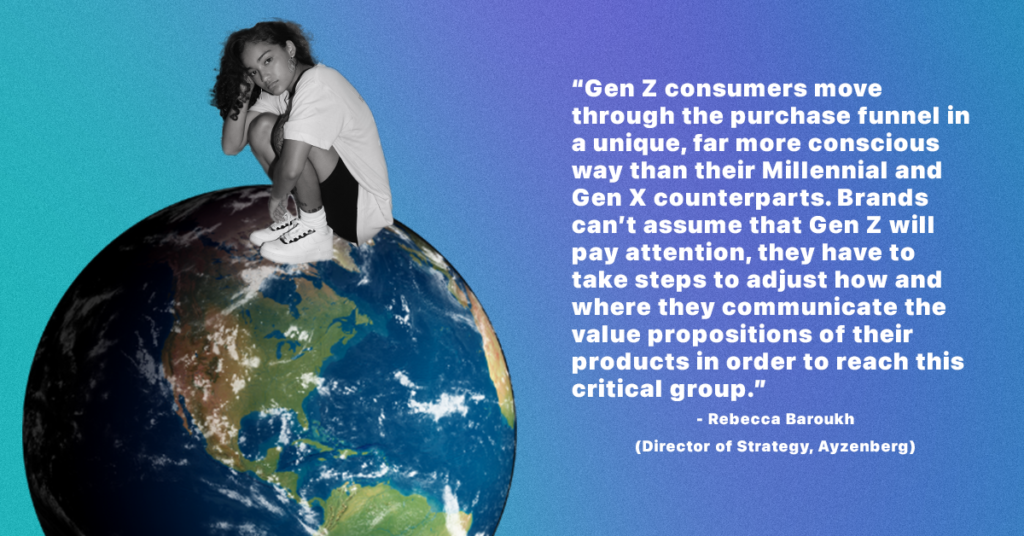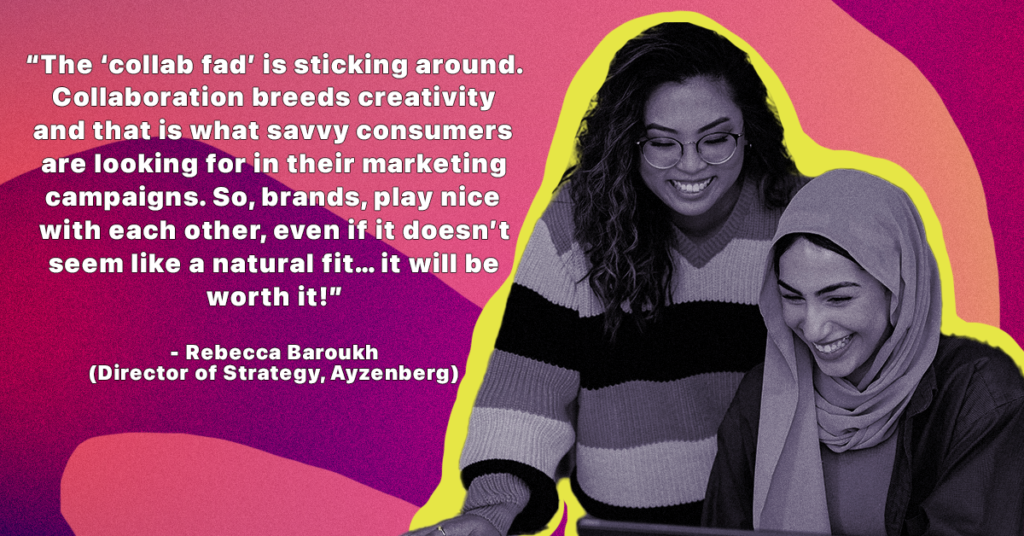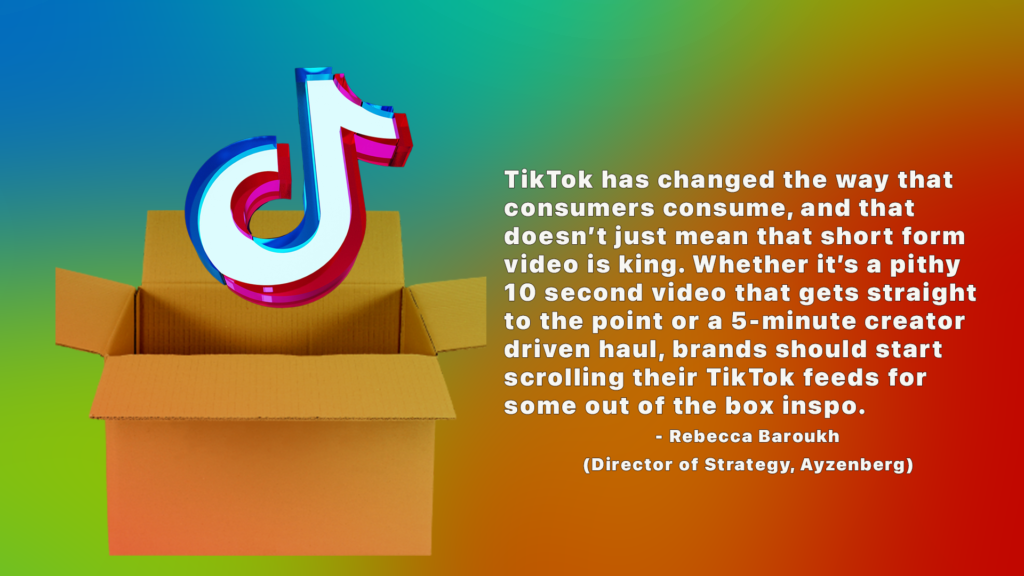Throughout the past year, we’ve collected, synthesized and disseminated over 200 trends to help Ayzenberg Group’s clients understand and navigate the ebbs and flows of today’s ever-changing, culturally–driven media landscape. From fashion fads to technological breakthroughs and from social media crazes to global events, we used various listening tools to identify and flag the greater underlying themes throughout the year. Below we’re sharing three of those standout trends for brand marketers from 2022 including the exponential impact of Generation Z, widespread brand collaborations and TikTok’s takeover of the entertainment world.
Genzification
With Gen Z reaching adulthood, demographers and marketers are already discussing how this cohort might differ from their predecessors in terms of priorities, behaviors, spending patterns and values. With 68.6 Million individuals, Gen Z is coming of age. They want to be heard and they are bringing their purchasing power with them.
A recent study from Publicis and Vevo showcases how Gen Z mostly engages with TikTok in the morning, YouTube in the afternoon, and content on-demand through connected TV (CTV) services at night. Also, this generation is using TikTok and Instagram for search instead of Google.
At a glance, Gen Z is more likely to purchase from brands they follow on social media—free delivery is a major incentive, while coupons and discounts are important—and 26 percent use social media to make purchases. Lastly, Generation Z is socially conscious and this has an impact on what they consume, how they consume it and from whom they are consuming. These behaviors differ from their generational counterparts as Generation Z has grown up with a high level of access to digital devices like computers and smartphones. Now, they have a wealth of knowledge at their fingertips and know how to use it. With sustainability, political support, conservation and community in mind, brands must recognize that this generation demands authenticity and transparency. The best way to adapt to that is to be attentive to the massive changes and meet them where they are, and follow the path of their shifting demographic power.

Collabification
Collaborations are nothing new, but how they were harnessed in 2022 showcases the power of partnership. The lines between industries blurred, and creatives from different fields worked together to create unique pieces that changed verticals.
A prime example of this was McDonald’s and Cactus Plant Flea Market. Collaboration between a fast food and fashion brand isn’t something you see every day, but the collaboration brought a buzz to both brands. The collab sold out at most locations, and the toys associated were selling for thousands on eBay. It brought new audiences to Cactus Plant and nostalgia—not to mention people, back to McDonald’s for a surprise and delight.
Lastly, Duolingo and HBO Max teamed up for their House of The Dragon series to create an app that taught audiences the fantasy language spoken in the show. This activation aided in the show’s record-breaking premiere with 10 million viewers on HBO. Collaboration should be a mutually beneficial experience. Being data-driven and having a pulse on culture set brand collaborations above the rest.

TikTokification
What resonates with Gen Z and what doesn’t? With one-fifth of Generation Z spending more than five hours per day on TikTok and nearly 40% of people in Gen Z saying TikTok videos are where they go to learn about and buy new products, it’s no wonder other apps are swiping at short-form video features, resulting in a sea of ambiguity between platforms as content is shared and reshared.
Short-form videos (long-form now as well) drew people in and kept them there for elongated periods. Gen Z is using the app to search and shop, frequently searching for “hauls,” “reviews,” and more, which fuels the app as a search engine. The searches led to Scrub Daddy, a sponge, being revived, with online store revenue reaching $500,000 because of the app accounts debut. The short video bites allow for funny skits and dances, but also the transmission of trends, opinions, facts and discourse. Lastly, among other things, it helps keep users aware of new music they may otherwise not have found. Songs seeing a resurgence include Wheatus’ Teenage Dirtbag and Kate Bush’s 1985 “Running Up That Hill,” which was popularized again due to Stranger Things, but assuredly helped by TikTok in its ascension of the charts in 2022.
Other apps like Instagram and YouTube have attempted to duplicate the powerhouse app. Still, both seem to be missing the magic sauce because they are losing the essence of themselves and attempting to duplicate and fit into the confines of one another. The efforts showcase that the best features keep applications afloat. Whether it be the sharability, the endless scroll-like features, or even the simple user tags—and despite the clones—there is really only one TikTok. It infiltrated how we shopped, shared information, found and listened to music and so much more. The mixture of these elements helped create a new social window into the lives of others. No matter what happens next with the app, the long-lasting effects will continue to ripple outward into the greater media ecosystem.

